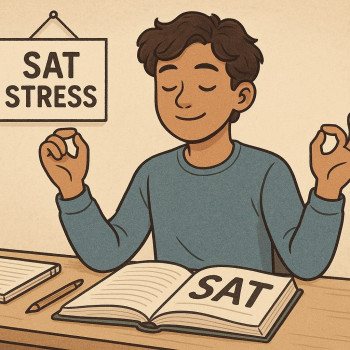Introduction: Why the SAT matters if you’re aiming for Keio
For many students outside Japan—and for those applying from the United States—Keio University is a dream: a historically prestigious, academically rigorous campus that blends tradition with forward-looking programs. If you’re reading this, you probably have questions about whether Keio expects SAT scores, how they use them, and what you should do to make your application shine. This guide walks you through the practical facts and the subtle strategies: what Keio typically looks for, how to prepare for the Digital SAT, and how to present your best self to admissions readers.

Quick snapshot: Do you need the SAT for Keio?
Keio University’s admissions rules for international applicants can vary by program and by year. Some international tracks or English-taught programs explicitly request or consider standardized test scores (like the SAT) as part of a holistic review; others prioritize school records, interviews, essays, and English proficiency exams. That means you should treat the SAT as a strategic choice: in many cases it can strengthen your application by providing an additional, objective measure of academic readiness.
When the SAT helps your application
- You’re applying to a competitive, English-language program at Keio where international comparisons are useful.
- Your school grades come from a system that’s hard for Keio to evaluate directly—SAT scores give admissions a familiar benchmark.
- You want to demonstrate college readiness in math or evidence-based reading and writing in an objective way.
- You’re aiming for scholarship consideration that may weigh standardized test results.
Understanding how Keio evaluates test scores
Keio’s admissions process is holistic: test scores are generally one piece of a larger puzzle that includes transcripts, interviews, recommendations, essays, and extracurricular accomplishments. Think of the SAT as a clarity tool. For international applicants, it helps admissions officers compare academic preparation across different schooling systems. A strong score won’t guarantee admission, but a weak or missing score can sometimes make it harder to compete—especially when others at your profile level submit strong results.
What admissions officers look for
- Consistent academic achievement across subjects.
- Evidence of critical thinking, not just rote memorization—SAT subscores and section breakdowns can help show this.
- Alignment between your stated interests and your academic record (e.g., strong math scores for a science/engineering applicant).
- Authentic personal statements and interview performance that complement objective test evidence.
Which version of the SAT should you take?
Since the SAT migrated to a digital format, make sure you register for the Digital SAT (the current format). Keio will accept scores from the official College Board administration. Focus on the digital test: it’s shorter, adaptive in structure, and emphasizes reasoning and clear written expression. If you’ve already prepared for the paper SAT, adjust your practice to the digital environment and timing.
Key differences to keep in mind
- The Digital SAT adapts in sections—your performance in the first modules influences later questions.
- Timing and question formats are adjusted: you’ll see more short, discrete modules rather than two long sections.
- Official practice resources (like College Board’s and Khan Academy’s) have been updated for the digital format—use them to reduce surprises on test day.

Target scores and how to interpret them for Keio
Keio does not publish a single cutoff SAT number that applies to all applicants. Instead, think in ranges and context. For international, highly competitive applicants, aiming for a score in the top national percentile of test takers for the Digital SAT will make your application more competitive. If your intended major is math- or data-heavy, prioritize higher math performance. Combine that with a compelling academic record and strong supplemental materials.
Suggested target ranges (practical guidance)
| Applicant Profile | Suggested Digital SAT Target | Why it helps |
|---|---|---|
| Highly competitive, STEM-focused | Top 5–10% (aim for very high math performance) | Shows quantitative readiness for engineering, sciences |
| Competitive, humanities/social sciences | Top 10–20% | Demonstrates critical reading and clear writing skills |
| Balanced applicant (strong extracurriculars) | Top 20–30% | Complements distinctive achievements outside class |
Remember: these ranges are guidance, not rules. Keio values fit and potential just as much as a number on a score report. If your profile shines in other areas—unique projects, research, or impactful community work—your application can still be highly competitive with slightly lower test scores.
Application timeline: when to take the SAT for Keio
Timing is practical: plan so your official Digital SAT scores arrive before Keio’s application deadlines for the program you’re targeting. Start preparing several months before your first test date. Many students take the SAT twice: once to learn from the experience and once to improve their final score. If you’re applying for entry that begins in spring or fall, check Keio’s program-specific deadlines and allow time for score reporting (and for possible delays).
Practical timeline
- 12–9 months before application deadline: begin focused, consistent preparation and diagnostic testing.
- 6–4 months before deadline: take your first Digital SAT; review score report and identify weak areas.
- 3–1 months before deadline: retake the SAT if needed; polish essays, recommendations, and interview prep.
- At least 2–3 weeks before deadline: ensure scores are sent and verified with your application materials.
How to prepare effectively for the Digital SAT
Preparation is not just hours logged—it’s deliberate practice. Rather than aimlessly doing practice tests, create a plan that targets your weaknesses while maintaining strengths. Here’s a practical blueprint that students (and parents helping them) can follow.
Eight-week focused plan (example)
- Week 1: Diagnostic test on the Digital SAT to identify strengths and weaknesses; set a realistic target score.
- Weeks 2–3: Focus on content gaps—algebra, data interpretation, grammar rules, or reading strategies—using official practice materials.
- Week 4: Work on timing and digital interface fluency; use practice sections under timed conditions.
- Weeks 5–6: Take a full-length digital practice test each week; analyze every missed question for root cause.
- Week 7: Drill weak question types and practice high-leverage strategies (e.g., passage mapping, process-of-elimination).
- Week 8: Light review, confidence-building, sleep schedule tuning, and final test-day logistics.
Study habits that actually work
- Short, intense sessions (45–90 minutes) with clear goals beat marathon sessions without focus.
- Active review: explain a missed question out loud or teach someone else the concept.
- Use official practice materials first—quality over quantity matters. Then supplement with targeted third-party practice if helpful.
- Simulate test day: take at least two full, timed digital practice tests under realistic conditions.
How to present your SAT score to Keio
When you submit scores, follow Keio’s instructions for international applicants and choose the right reporting code or application portal option. If your SAT is optional for a specific track, include scores if they strengthen your profile; if they’re required, be sure to submit official reports directly from the testing service. Also remember to include context in your application—if your schooling system uses a different grading scale or if unusual circumstances affected your testing, use your application materials to explain concisely.
Tips for score reporting and context
- Send official scores early—don’t wait until the last minute.
- If your English proficiency is being demonstrated by other means (e.g., IELTS or TOEFL), mention how the SAT complements those results.
- Use your personal statement or additional information section to contextualize academic records (e.g., limited access to AP courses or differences in curriculum).
Beyond scores: essays, interviews, and extracurriculars
Keio is looking for students who will contribute to its intellectual and campus life. Your essays and interviews are the places to show voice, curiosity, and fit. Use concrete examples: a research project, an independent study, leadership in a student group, or a community initiative. These details often matter more than a single test score; they tell the admissions team who you are and what you’ll bring to Keio’s classrooms.
What to emphasize in your application
- Academic curiosity: concrete evidence of sustained engagement in your intended field.
- Cross-cultural adaptability: examples of international experiences, language learning, or collaborative projects.
- Impact: leadership and initiatives that had measurable results, no matter how small.
- Clear reasons for choosing Keio: be specific about programs, faculty, or opportunities that attract you.
How personalized tutoring can make a difference
Many students benefit from focused, individualized help—especially when preparing for a high-stakes international application. Personalized tutoring supports tailored study plans, efficient practice, and emotional support through the process. For instance, Sparkl’s personalized tutoring model—1-on-1 guidance, tailored study plans, expert tutors, and AI-driven insights—can help you zero in on the precise skills the Digital SAT assesses, while also helping shape essays and interview practice that connect to Keio’s culture. A tutor can identify the smallest adjustments that yield the biggest score improvements and help you present a coherent application narrative.
How a tutor typically helps
- Creates a study plan matched to your diagnostic results and life schedule.
- Explains tricky concepts with examples tied to your interests.
- Provides regular, timed practice and detailed error analysis.
- Coaches essay drafts and mock interviews so your voice comes through confidently.
Common myths and mistakes to avoid
It’s easy to fall for myths that waste time or cause stress. Here are a few to watch out for.
Myths debunked
- Myth: “Keio only cares about SAT scores.” Truth: Keio values a full application; scores are one part of a broader review.
- Myth: “You must take the SAT five times to be competitive.” Truth: Focused practice and targeted retakes—one or two informed attempts—are usually enough.
- Myth: “High SAT alone guarantees admission.” Truth: Strong scores help, but fit, essays, recommendations, and interviews matter deeply.
Sample checklist before you submit
Use this checklist to make sure you haven’t missed anything important before sending your Keio application.
- Confirm whether your specific Keio program requests or requires SAT scores.
- Send official SAT scores from the testing service to Keio before the deadline.
- Have at least one teacher submit a recommendation that highlights academic strength or intellectual curiosity.
- Polish essays with multiple drafts and feedback; ensure they convey your genuine voice.
- Prepare for interviews with mock practice and stories that demonstrate fit.
- Double-check all documents for completeness and accurate translations if required.
Real-world example: A competitive applicant’s path
Meet Aiko (a composite profile drawn from common successful approaches). Aiko wanted Keio’s international economics program. Her high school used a grading system unfamiliar to Japanese admissions, so she decided to take the Digital SAT to provide a recognizable measure of academic readiness. She took a diagnostic test, worked with a tutor to strengthen math problem solving and evidence-based reading, and took the Digital SAT twice. While her first test highlighted pacing problems, focused practice improved her score by a meaningful margin on the second attempt. She used Sparkl-style 1-on-1 coaching to shape her essays, showing concrete research projects and a summer internship that connected directly to Keio’s curriculum. The result: a coherent application where scores supported a compelling narrative about her academic path and future goals.
If you don’t have an SAT score—what then?
Not every applicant needs to submit SAT scores. If Keio’s program you apply to is test-optional or if you have strong alternatives—robust school grades, international exam scores, strong recommendations, or relevant project portfolios—you can still be very competitive. However, if standardized tests are optional but commonly submitted by peers, consider whether submitting a strong Digital SAT could give you a comparative edge.
Final tips: calm, consistent, and strategic
Applying to a top international university like Keio is a marathon, not a sprint. Small, consistent improvements matter more than last-minute cramming. Keep these final tips in mind:
- Start early and create a calm, realistic schedule that balances schoolwork and test prep.
- Use official Digital SAT practice resources first so you get used to the new format and interface.
- Focus on high-leverage improvements (error patterns, pacing, and answer-choice elimination) rather than trying to master every topic at once.
- Get feedback on essays and interviews from trusted mentors or a personalized tutor—someone who can help you tell your story succinctly and authentically.
Parting thought: The SAT is a tool, not the story
Remember: the SAT is an instrument that helps admissions officers compare academic readiness—it’s not the whole story. Keio wants students who bring curiosity, persistence, and intellectual contribution to campus. Use the SAT to support the narrative you build in essays and interviews. If you combine strategic test preparation, thoughtful application materials, and authentic storytelling—supported by tailored help where needed—you’ll give yourself the best chance to make an impression.
Need a hand?
If you’d like targeted help, consider a personalized tutoring approach that aligns test preparation with application strategy. A program offering 1-on-1 guidance, tailored study plans, expert tutors, and AI-driven insights can speed progress, reduce stress, and clarify priorities—so you can focus on the parts of your application that truly reflect who you are.
Good luck—Keio is looking for students with curiosity and purpose. With clear preparation and a thoughtful application, you can show them exactly why you belong there.













No Comments
Leave a comment Cancel